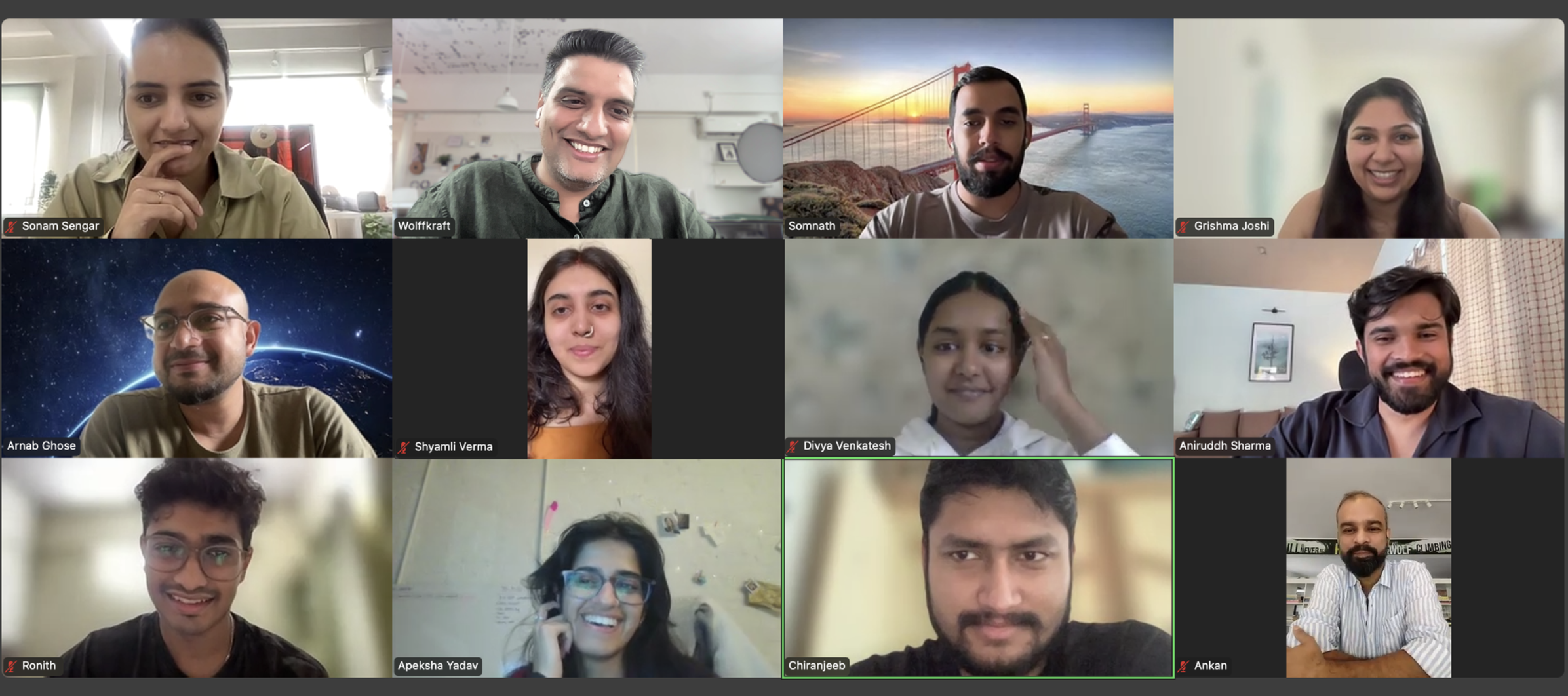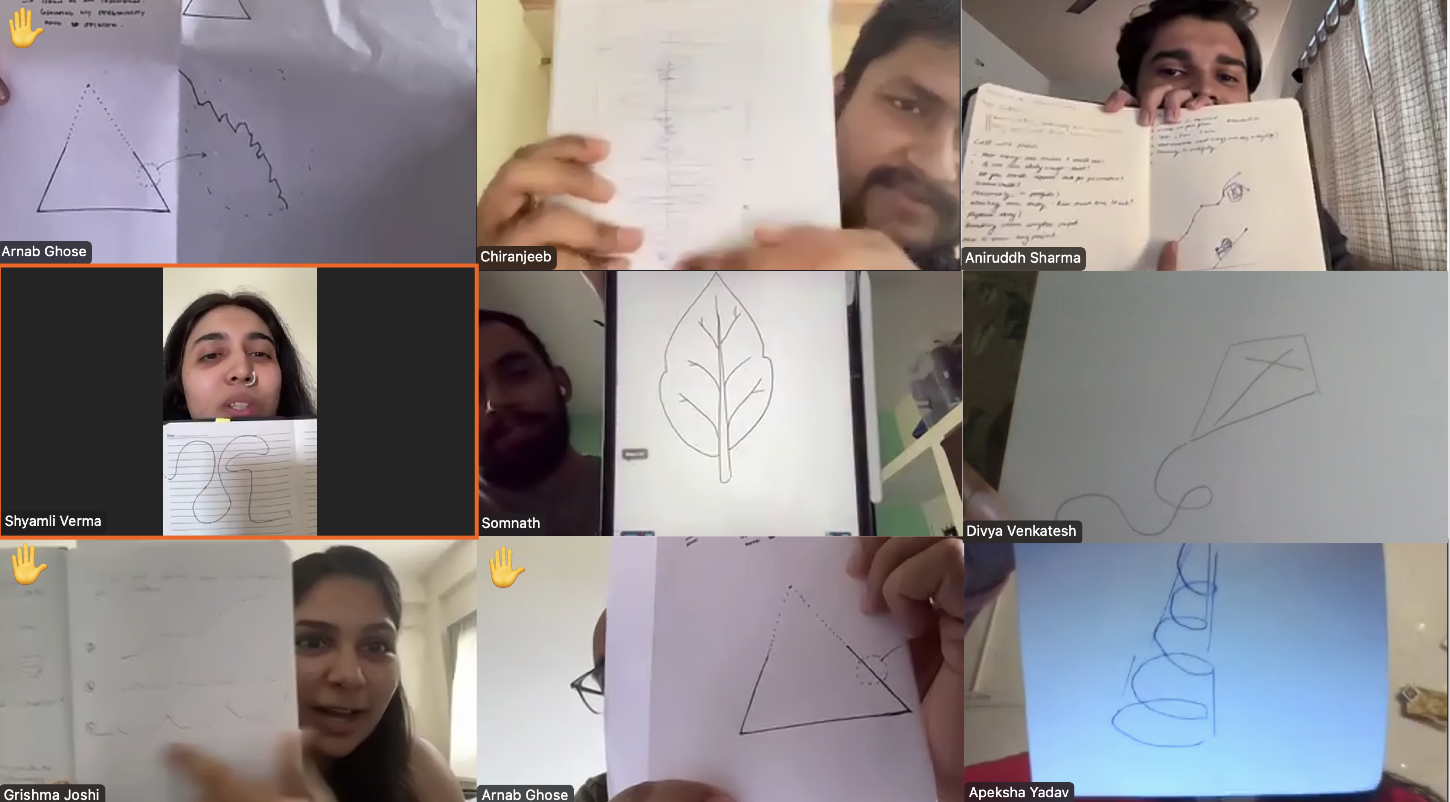EPC Dialogues: Invisible Effort, Career Reflections, and Impact vs Mastery

This month's EPC Dialogues brought together designers from nine different types of organisations, including SaaS companies, animation studios, and large industrial firms. In a 90-minute session, we began with brief introductions, explored key career questions, mapped out the evolution of our design journeys, and concluded with a lively debate on whether designers should prioritise impact or mastery.
We discussed the type of work that requires the most energy but often goes unnoticed. One example is the time and thought that go into writing clear and precise communication. Something as simple as the first Slack message can take multiple rewrites because it sets the tone for everything that follows. Designers shared how they often rewrite it up to 10-20 times to get it right.
Mentorship was another area that came up. Senior designers discussed how they spend their time outside of work, reading, experimenting, and learning, to ensure their juniors don’t feel stuck. One participant said, “I must show them something new every review; that means learning nightly.”

A significant part of the invisible effort is guiding decision-makers. Designers often have to translate complexity, simplify trade-offs, and present direction in a way that builds trust. This can take weeks of nudging, aligning, and reframing—but it’s crucial to the project’s success.
We also talked about the behind-the-scenes work of aligning cross-functional teams. Designers act as the bridge between PMs, developers, QA, visual design, and accessibility. This includes hours of back-and-forth discussions, many of which happen informally and are never documented.
There’s also the ongoing battle to protect the process itself. Designers often spend time advocating for sufficient space to do things right, whether that means proper discovery, thoughtful iteration, or structured reviews. Getting this time isn’t automatic. It requires consistent effort and negotiation.
Another aspect that often goes unrecognised is process and system design, which usually falls outside the typical boundaries of digital product development. This might include building internal workflows, onboarding practices, or frameworks for collaboration, things that make design sustainable over time.
Iterations were another common theme. Many spoke about how the final design that gets approved or shipped is the result of many unseen rounds, tweaks, discarded versions, and internal reviews that never make it into the final deck. Still, they were necessary to arrive at the right solution.
Lastly, quality takes time. Designers fix tiny visual issues, explore unused variations, and double-check the smallest interactions not because someone asked them to but because they care. As one person said, “Even if two pixels are off, the client won’t know—but we’ll fix it.”
What does the shape of your career look like?
Everyone was asked to draw the evolution of their design journey, and the answers were interesting and diverse.

One person drew a spiral to illustrate how they're always moving, sometimes retracing their steps, but still making progress. Another drew a double pendulum, with one steady swing and another more unpredictable, to show the mix of routine and surprise. Someone described their path as a kite, saying they were lifted and guided by mentors. Another used a leaf to show how their strong values have helped them grow in different directions. One designer likened their journey to pushing a heavy boulder uphill, like Sisyphus, but noted that the struggle made them stronger.
Doing this helped everyone take a step back and think. Is your career straight, circular, or unpredictable? And what does that tell you about what to do next, and where are you headed?
Should designers chase impact or mastery?
We also hosted a debate session on whether designers should prioritise impact or mastery, which generated strong arguments from both sides.
Those in favour of impact argued that working fast and delivering measurable results lead to faster learning. Quick wins create feedback loops that help teams improve in real-time. In today's fast-moving market, designers can't afford to wait. As someone put it, "The world doesn't operate on an individual's timeline."
They also noted that outcomes are easier to communicate. Clients and teams rally around things they can see and count. Many design systems and tools we use today, such as atomic design or design sprints, emerged from urgent needs rather than long-term refinement.
On the other hand, those who supported mastery made a case for depth and quality. They pointed out that iconic products, such as the iPhone or Studio Ghibli films, stand out because someone cared deeply about every small detail. They reminded us that some of the most valuable design qualities, such as delight, trust, and elegance, can't be measured easily. Craft, when done well, creates a lasting impact over time.
Instead of chasing metrics first, they argued that mastery can naturally drive results later. Many also shared that personal motivation comes from a genuine love for the craft. Staying up late to perfect a design doesn't come from a KPI. It comes from obsession.
The moderator wrapped up the discussion with a clear message: it's not an either-or situation. Designers need both. Deliver outcomes, but also sharpen your skills. Just like IDEO's approach—"prototype to think; polish to last."
A few takeaways that Designers can start using right away.
- Write a short version of your story. You should be able to explain your design journey in 60 seconds. Most opportunities don't wait for a long intro.
- Track the work people don't see. You can keep a simple log of behind-the-scenes efforts to make it easier to reference during reviews and retrospectives.
- Treat learning like a real task. Block time on your calendar every week for reading, exploring new tools, or mentoring others.
- Draw your career path. Whether it looks like a spiral, staircase, or kite, sketch it out and ask yourself what direction you want to take next.
- Launch early, improve after. Use impact to test ideas quickly. Then, refine and polish for long-term quality.
- List your dream mentors. Keep a live list of people you'd love to learn from
- Tell better stories. If you're presenting a screen or strategy, could you explain what impact it brings and what level of craft went into its creation?
Design is about striking a balance between short-term results and long-term growth. Build your skills so the work lasts. Create real impact so your effort gets noticed. See you at the next EPC session; bring your notebook.
Member discussion